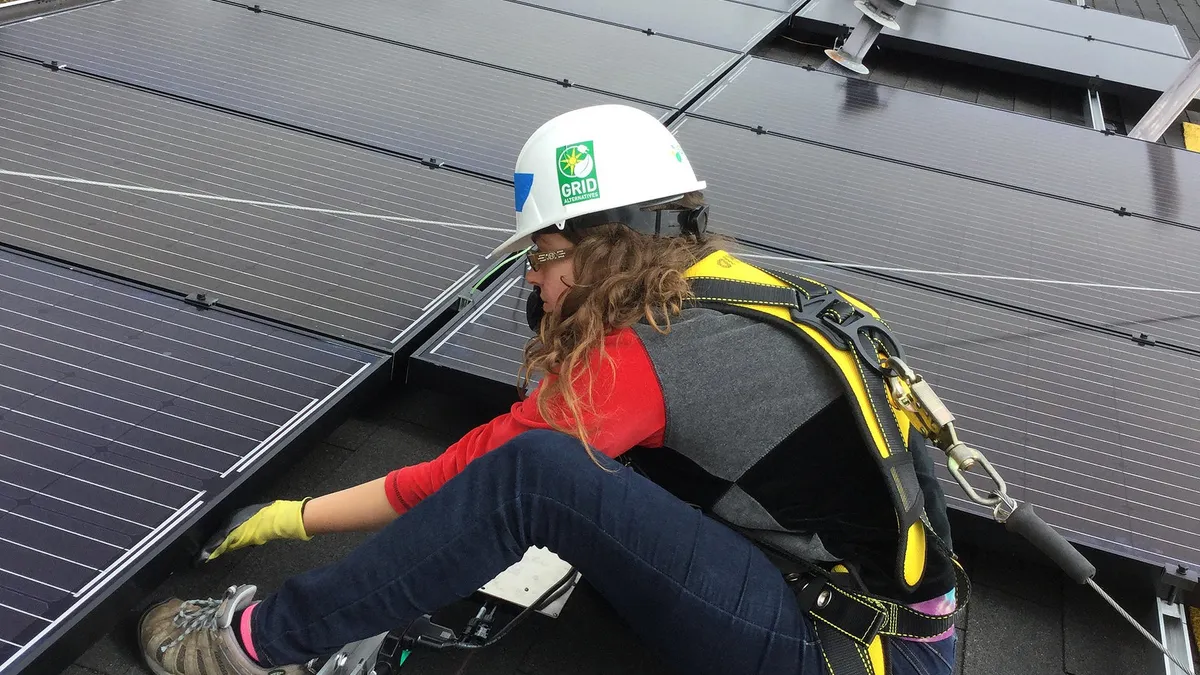Dive Brief:
- Rising utility bills are helping push residential customers to add rooftop solar to their homes, boosting companies like Sunrun and SunPower, Morgan Stanley & Co. analysts said in a note Thursday.
- Grid reliability concerns are also increasing demand for solar coupled with battery storage, the analysts said.
- Those trends could threaten utilities, according to Paul Patterson, a Glenrock Associates equity analyst. “Distributed generation and/or microgrids could very well pose a threat to utilities if the cost of technologies like solar and storage trend lower in comparison to traditional utility service,” Patterson said Friday in an email.
Dive Insight:
“We expect strong demand for rooftop solar will continue as rising utility bills and grid reliability issues drive customers to seek cheaper and more reliable alternatives,” Morgan Stanley analysts said.
In earnings calls this week, Sunrun and SunPower officials said several factors, including rising utility bills, are boosting their businesses.
Sunrun installed 246 MW in the second quarter, up 33% from the year-ago period, while its customer base grew 21% in the period from a year earlier to 724,000 customers, the San Francisco-based company reported Tuesday.
In part, the growth was driven by utility rate hikes, according to Danny Abajian, Sunrun CFO.
“We implemented meaningful price increases earlier this year behind large electric utility price inflation and high interest rates,” Abajian said during an earnings call with analysts. “Since then, utility price inflation has remained persistently in the double digits, as utilities pass through their higher labor, fuel, and capital costs to customers. This provides ample headroom to continue to evaluate market and pricing opportunities while still delivering customers an incredibly attractive value proposition.”
SunPower is seeing a similar effect, according to the company’s earnings call on Monday.
“Our main competition has been traditional electric utilities and their costs are rising more rapidly than the solar industry,” Peter Faricy, SunPower CEO, told analysts.
Electric utility bills rose 9% nationally in the first quarter, with some states up as much as 15%, according to the San Jose, California-based company’s earnings presentation. Higher fuel costs for power plants, higher cost of capital, and increased utility spending on transmission and distribution system upgrades are expected to drive utility rates higher, Faricy said.
“All these factors add up to a strengthening customer incentive to add rooftop solar, while simultaneously providing the residential solar industry with more pricing power than we've seen in years,” Faricy said.
SunPower added 19,700 customers in the second quarter, up 51% from a year ago. The company expects its customer base will grow about 35% this year.
About 4% of U.S. homes have solar panels, making the residential solar market “under penetrated,” the Morgan Stanley analysts said.
In addition, the residential solar industry is evolving from a predominantly solar-only offering, to a solar, plus energy storage and electric vehicle charging offering as customers look to reduce their energy bills, improve reliability and reduce their environmental footprint, the Morgan Stanley analysts said.
They expect the adoption rate for backup battery storage combined with solar panels will increase “significantly” in the next two years as supply chain bottlenecks ease and battery costs decline.
Also, homeowners will likely increasingly opt to use solar to charge their EVs, requiring larger solar systems on their roofs, which could increase solar installers’ per customer profit, the Morgan Stanley analysts said.
The analysts cautioned that the Uyghur Forced Labor Prevention Act may be delaying solar panel imports, which could lead to longer installation times for solar installers.
Also, a slowdown in home construction could dampen growth in solar installations, the analysts said.















